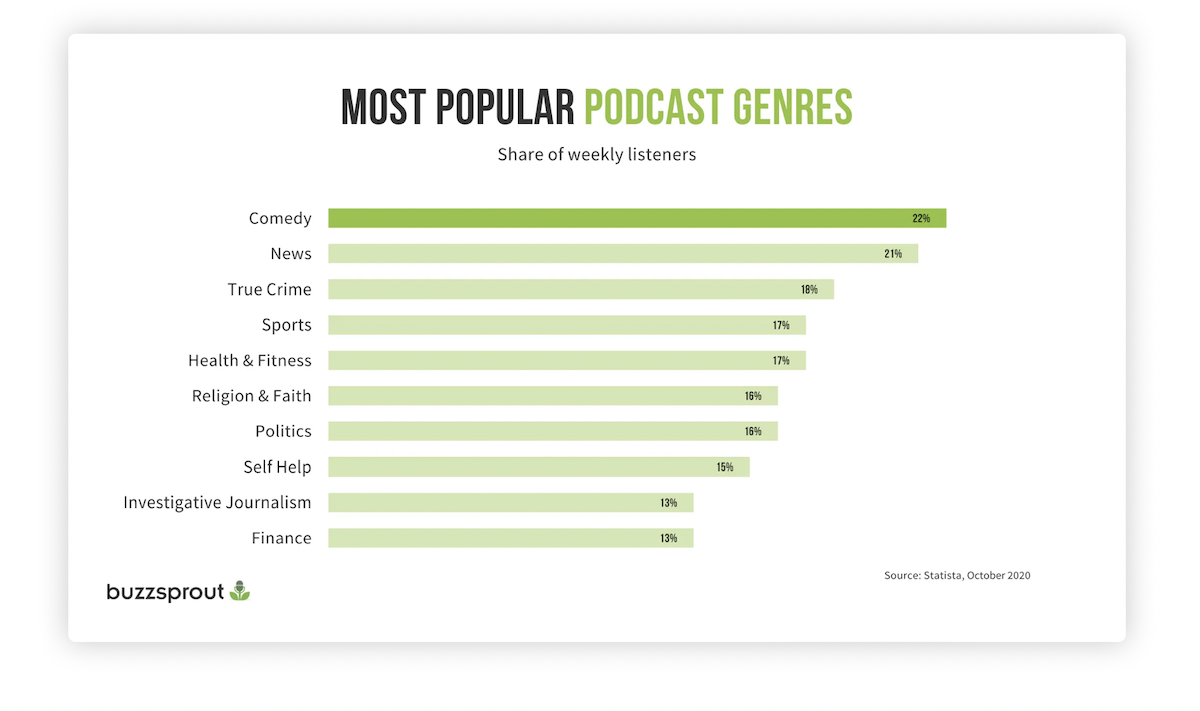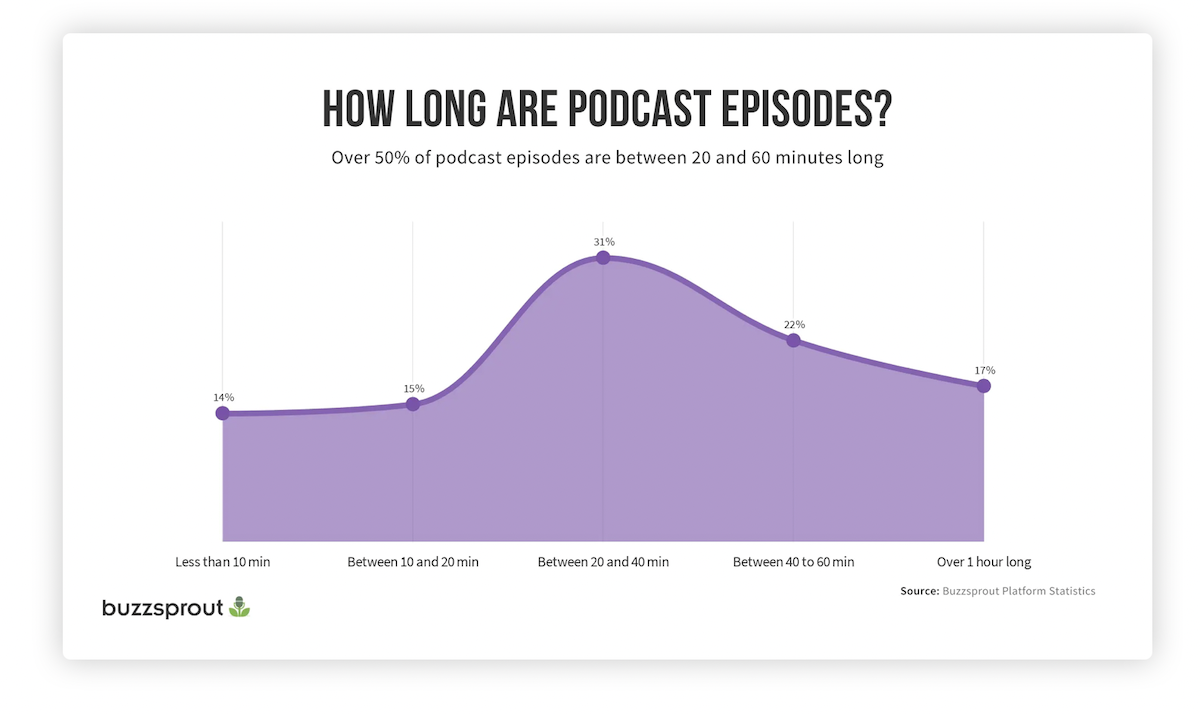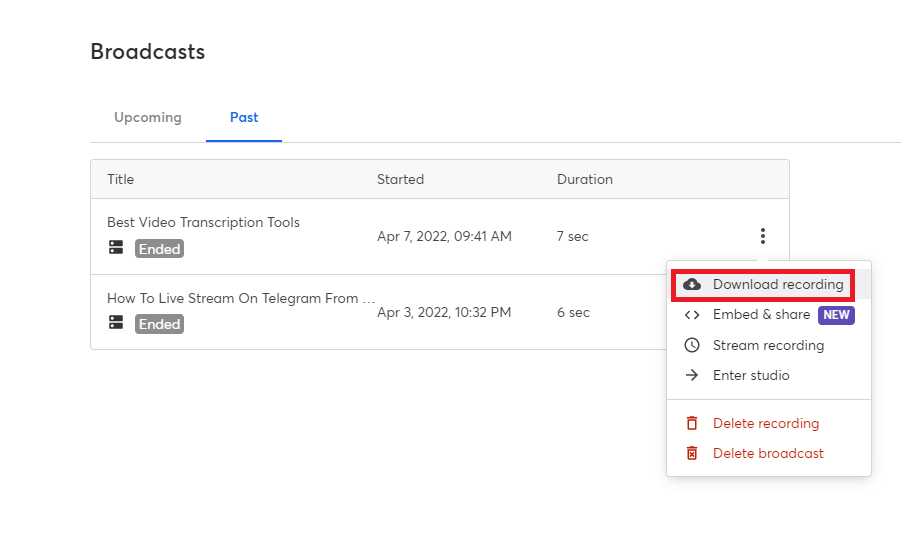Written by StreamYard
How To Build A Community With A Podcast
Did you know that you can achieve a lot more if you learn to build a community with a podcast? However, for using podcasts to grow your audience, you don't have to move mountains or treat podcasting as something extra that you'd have to do on top of live streaming.
At StreamYard, we are all about working smart, using what you already have access to, and making the best use of your time and effort. Learning how to build an engaged community around your podcast will require not only podcasting -- but also a bit of networking, marketing, management, hustle, and more.
So, How Popular Are Podcasts? And Why Should You Care?
Podcasts are immensely popular for a single defining reason that no other medium matches: portability.
According to Podcast Insights, as of April 2021, there were more than 48 million podcasts. While over 75% of the U.S population is familiar with podcasts, more than 155 million people in the U.S listen to podcasts (up by 51% from 2019).
Now that we are at it, here are some popular podcast genres:

People can listen to podcasts while working, traveling, waiting, or even while driving. The inherent nature of attending high-engagement events like live streams, videos, or webinars requires audiences or participants to be a "little more active," watch (or listen), chat with you live, ask questions, and so on.
However, listening to podcasts is passive. Just listen, learn (much like an audiobook but without podcast creators doing anything as intense as producing an audiobook itself), and take notes. That's why building a community with a podcast is easier.
The Average Length Of Podcasts
There's no predetermined or set time for the length of podcasts. Short or long? It's up to you. But there's data as to how long most podcasts are.
According to Buzzsprout, most podcasts average between 20 minutes to 40 minutes.

That said, the best way to determine the best length for your podcast is to actually start doing podcasts and get feedback from your listeners.
How To Make Podcasts From Your Live Streams To Build A Community
Live streams automatically bring in video and audio. For live streaming, in most cases, you are essentially recording yourself (or a screen or a couple of screens) while speaking into a microphone.
Depending on the kind of live streams you do -- and especially for business, learning, lifestyle, interviews, and so on -- the entire audio component of your live stream is essentially a podcast that you probably didn't know you could use.
There are several ways to repurpose your live streams, of course.
Simplifying things a bit, here's how your live streaming video component can be repurposed into podcasts:
Launch Your Live Streams And Be Sure To Record Them

StreamYard has a handy recording feature that you could use to record your entire live stream. After your live broadcast ends, you can download it (upload stream in its entirety to YouTube or your website, edit out clips and share on social media, etc.) Or, more specific to our case in point here.
Download Audio

Using the StreamYard recording feature, you can also download only the "audio." Download the audio component of your live stream (to be edited later) and convert this into an actual podcast episode.
Pro Tip: If you are on the StreamYard Professional, you can enable individual audio tracks for your recordings.
Edit The Audio File (From Your Live Stream)
Add podcast-specific elements such as an advertisement, intro, and outro music, etc., through tools such as Captivate or Audacity and you'll be ready.
Also, learn about the advanced audio features such as audio ducking, or doing live streams with just the audio on.
By following this workflow, you can get a podcast episode for each of your live streams. Or, you can also split up a single live stream into maybe 2-3 different podcast episodes if you choose to keep your podcasts shorter in length.
If you're interested in solo podcasting, here's a guide on recording a solo podcast.
Now, let's dig into how to build an engaged community around your podcast.
How To Grow Podcasts And Build An Engaged Community Around Podcasts: 7 Best Ways
Marketing and promoting your podcast (to grow your audience) is pretty similar to growing a live stream audience. It's just that the content type and format change – while the principles, strategies, and tactics for marketing do not.
Note: The success of your podcast depends on consistency (just as it is for live streams).
Here are some dependable ways to grow your podcast:
1. Stay Consistent
Check out other successful broadcasters, and you'll notice that success has nothing to do with education, skills, experience, or pure genius.
Being successful in your line of profession or niche depends on one thing: consistency.
Consistency is an underrated superpower, and not many people pay attention to it (maybe because it's an open secret).
Podcasting consistently (just like you'd if you were to grow your live streaming channel) is the most important thing you'd need. If you don't show up regularly, everything else you read below is irrelevant.
Fix one schedule for podcasts. Then, stick to it for a long time. Then evolve as your podcast does.
StreamYard, with its super-awesome features, can help you create better podcasts to ace the consistency game. Check out this video to know how to use StreamYard for podcasting:
2. Cross-Promote Podcasts On Live Streams
While you might get podcasting platforms to promote your show to other listeners, don't be afraid to leverage your existing live streams and the audience you've already built there. This can be a great place to start promoting your podcasts to build a community with a podcast.
As you do live streams regularly, mention your podcast (and why your audience members should download episodes) while live streaming.
For example, you may have people who watch your live streams, but what about someone who commutes and cannot watch? Be sure to let your audience know they have options.
You can also use live stream specific features such as lower-thirds, overlays, graphics, QR codes, and more to promote your podcast.
Pro Tip: Consider creating a short URL that is easy to remember, and redirects to your podcast. This way it's easier for everyone to find.
3. List Your Podcast In Multiple Directories
Podcast distribution is often ignored, but it shouldn't. Luckily, thanks to the popularity of podcasts, there are major podcast distribution channels and independent directories where you can list your podcast.
You'd obviously want to start on Apple Podcasts, Spotify, Amazon Music (which hosts podcasts too), and others.
Here are some other directories for you to consider:
Keep in mind that many podcasts hosting services make it easy for you to submit your podcast to multiple directories with just a few clicks.
4. Podcast SEO
Traditionally, podcasts were not considered SEO assets. However, thanks to the surge in popularity, podcasts are actively searched for -- on Google and other search engines.
Did you know that podcasts show up on Google search as well? Sometimes, podcasts are shown directly on search results. In other cases, your podcast descriptions, podcast transcripts, or podcast show notes also show up on Google.
Thus, paying attention to SEO basics for your podcasts can do a lot for your podcast growth, growing your audience, and a general lift in your digital presence overall.
The basics of podcast SEO are fairly straightforward, thankfully:
- Use free tools such as Google Keyword Planner, UberSuggest, and Google "People also ask" to pick the right keywords to use in your podcast titles.
- Use the keywords (found by conducting research with one of the tools above) in your podcast titles, podcast meta, podcast tags, etc.
- Google also analyzes your podcast's audio to show relevant podcast episodes if this content matches search intent.
- Use the podcast transcript, show notes, and descriptions to your advantage and engagingly write these while optimizing them for search engine ranks.
As Tereza Litsa of Search Engine Watch puts it, "Quality first; Podcast SEO next."
5. Promote On Social Media To Build A Community With A Podcast
Social media is now bigger than it's ever been. Podcasts can naturally call social media home, especially if you share parts of your podcasts -- as audio clips -- on large networks such as Twitter, LinkedIn, and Facebook.
You can also expand your presence on social networks such as Facebook, LinkedIn, and Twitter by using their new, built-in audio content features. Facebook offers the ability to share your podcast on its platform. Twitter already has Twitter Voice and Twitter Spaces. Then, LinkedIn is also rolling out LinkedIn Audio Events.
These audio features, directly on social networks, work as a handy extension for your podcasts.
You can also watch this video to learn how to include your community when recording podcasts:
6. Stay On Point. Keep Podcasts Short & Crisp.
At StreamYard, we've seen more than our share of live streams and podcasts. But, of course, we are also neck-deep into pre-recorded videos and webinars. Often, we've seen a recurring aspect common to all of these formats:
Rambling. Drifting.
Some hosts (people who do live streams or podcasts) mistakenly think that mentioning a little about their recent vacation to Mexico City, Mexico, or the sun-kissed beaches of Thailand make for an exciting conversation opener.
No one is interested.
If your podcast topic was "How to Make Podcasts To Grow your Business," that's all that your audience is interested in.
Surprisingly, a large section of podcast listeners (along with combined audiences for live streams, videos, and webinars) do tolerate, put up with, or just go along with these "ramblings."
Of course, they are just being nice.
You do have the option of getting to the point right away. Or make sure that your niche-unrelated-talk (anything about kids, your trip to the Bahamas, or anything else) is less than a minute long.
You can show your personal side, yes. The only point is: don't make it all about yourself if you strive to build a community with a podcast.
7. Keep Your Podcasts Conversational
Unlike live streams, podcasts don't have the advantage of real-time interaction with your audiences. You speak; they listen.
As such, it's way harder to keep your podcasts engaging. To overcome this, here are a few pointers that might work well:
- Keep your podcasts crisp and short. Do justice to the topic at hand.
- When your podcast listeners tune in and listen, they should walk away with inspiration, knowledge, or both.
- Prompt podcast listeners to share insights, ask questions, comment on the podcast episode itself, share the podcast link on social media, etc.
- Ask lots of questions (especially after you make statements). Simple questions such as "What do you think?", "Please let me know how you intend to deal with this sort of an issue/dilemma/problem?", "I am curious. How did you manage?". Of course, line up these questions based on what your podcast episode was all about.
- Include a call-to-action at the end of your show to keep viewers engaged. This could include leaving a review about your podcast, sharing your podcast episode, and more.
If you want to learn some more tips on addressing your audience when live streaming a podcast recording, here's what you need to watch:
Ready To Build A Community With A Podcast?
We hope this guide helps you build a community with a podcast. So, where are you on the journey? Join us on Facebook and be a part of our official community to learn all things about live streaming, videos, podcasts, and more.
And if you're new to the world of podcasts, check out this guide on launching a podcast with StreamYard.
